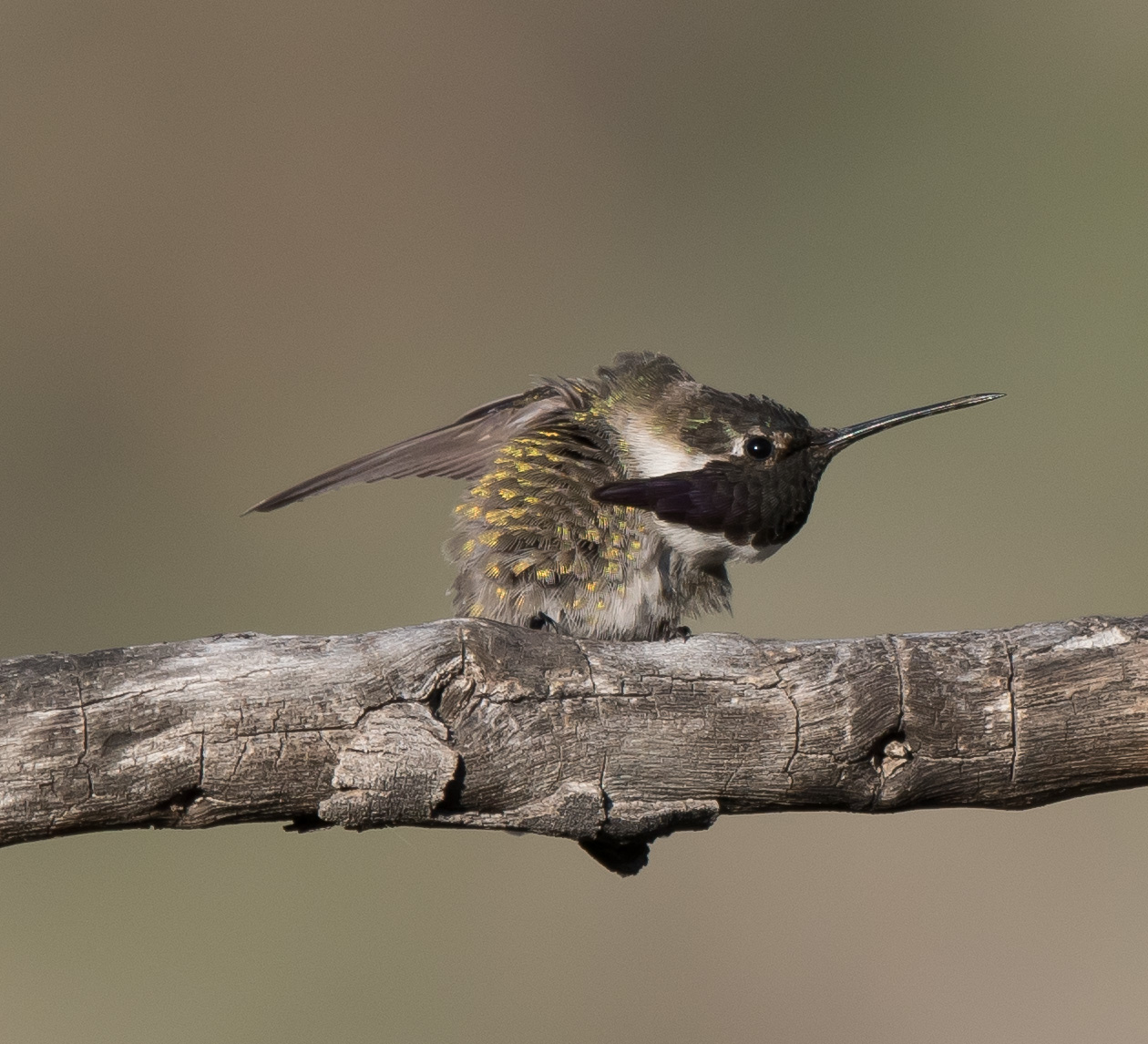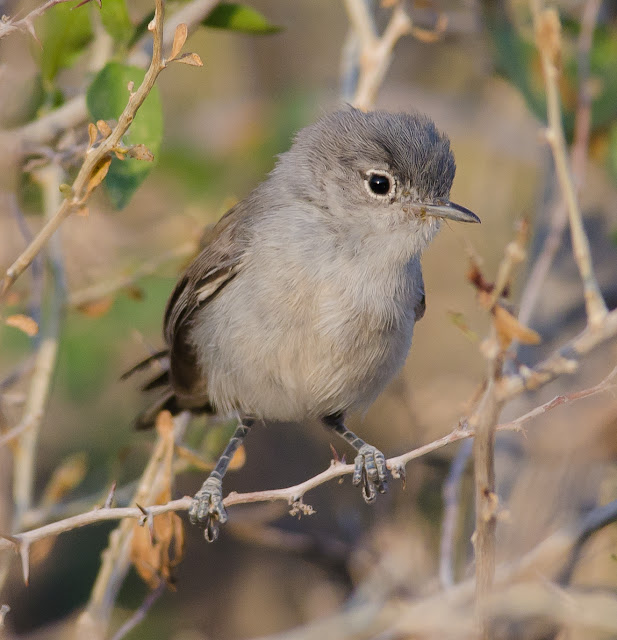After surviving my more strenuous hike to Tom's Thumb on Saturday, I decided to head out to one of my regular spots, Pima Canyon Wash in South Mountain Park. But this time I added a variation and once the wash came to the CCC structure and the beginning of the National Trail, I ventured up to higher elevations to try and locate a back trail down into the wash area. I found one, but it is not one that I would recommend to most people as I found a couple of spots where I was not sure how I was going to make it down the huge house sized boulders into the valley below. This hike totaled 5.6 miles of hiking and an elevation gain of about 600', but what a beautiful canyon to be hiking in and I only found 1 other person in the canyon.
Since my hike started at 5:30 AM the first part was right at sunrise and one of the first birds I was able to photograph was an Ash-throated Flycatcher, fledgling/juvenile. There were 4 of these birds in the wash area and it appeared to be 2 adults and 2 offspring from this year's first breeding as they followed the parents and were constantly begging. I was able to only get one photo when one of them landed in a bush for a brief moment with the sunlight creating an interesting background color.
Ash-throated Flycatcher
A bit further up the wash I encountered one of my favorite resident birds for this spot, the Black-tailed Gnatcatcher. There were actually 2 of these birds in this bush; a male parent and a fledgling/juvenile. I tried my usual pishing, as this species will sometimes react to that and come closer for a better view. Well the young one was quite receptive and came out to the front of the bush to really check me out. Apparently, dad has been fooled more than once as he was not going to have any of this and stayed fairly well hidden in the branches of the bush.
Black-tailed Gnatcatcher
Black-tailed Gnatcatcher
Up on the upper ridge a Curve-billed Thrasher landed on a Saguaro and as I was trying to focus in on it, a White-winged Dove landed on another arm of this same Saguaro.
Curve-billed Thrasher
White-winged Dove
The White-winged Dove is quite a handsome dove when compared to its more common cousin the Mourning Dove which is probably the 2nd most common dove in the United States. Most of the time I do not bother with photographing the Mourning Dove as most people see them on a daily basis.
Mourning Dove
A female Ladderback Woodpecker made her presence know by calling and then showing herself on a branch of a tree.
Ladderback Woodpecker
Non-avian species included a Harris's Antelope Ground Squirrel and a pair of Rock Squirrels.
Harris's Antelope Ground Squirrel
Rock Squirrels
It almost amazes me to see some of the plant growth in the inhospitable places such as these 2 cacti growing out of a crack in a rock. Always wonder how 2 seeds got dispersed into a small crevice and then had just the right conditions to germinate and sprout and then grow into a substantial plant.
Will end the post with a couple of scenic photos; one looking through a saddle between a couple of mountains at a small portion of the great city of Phoenix in the far background. The other is a ravine full of boulders and rocks and somewhere far in the distance is the parking lot where my car is parked. This is the ravine that took me back to the start and required a bit more serious hiking and maneuvering between the rocks.
View of a bit of Phoenix in the far background
Somewhere in the far distance and to the right my car is parked.






















































